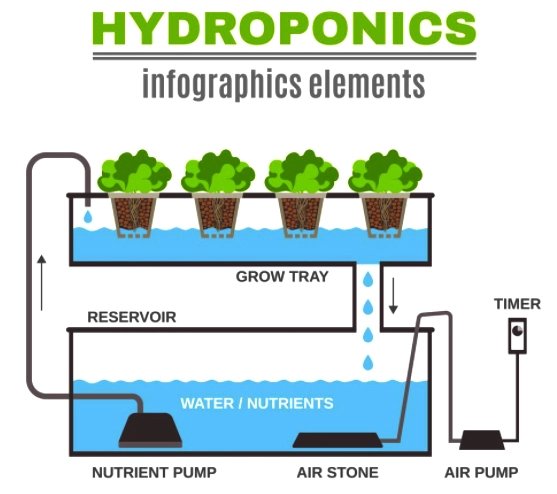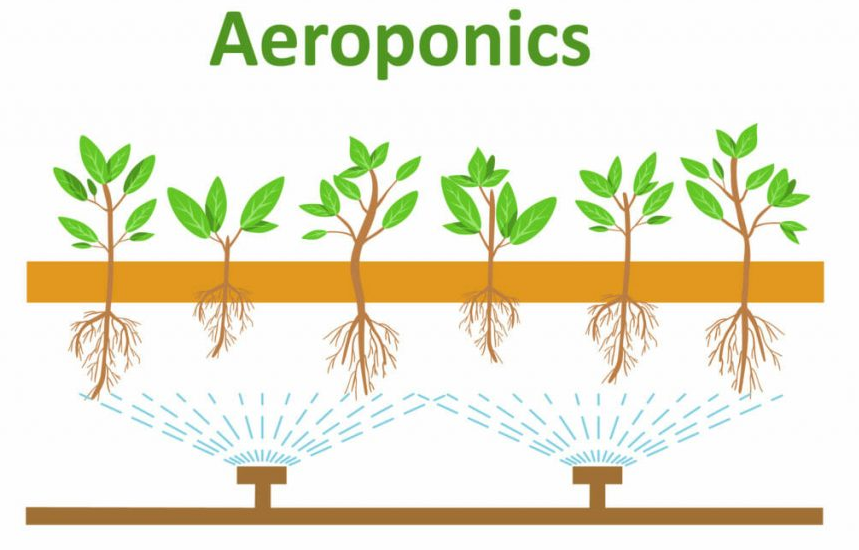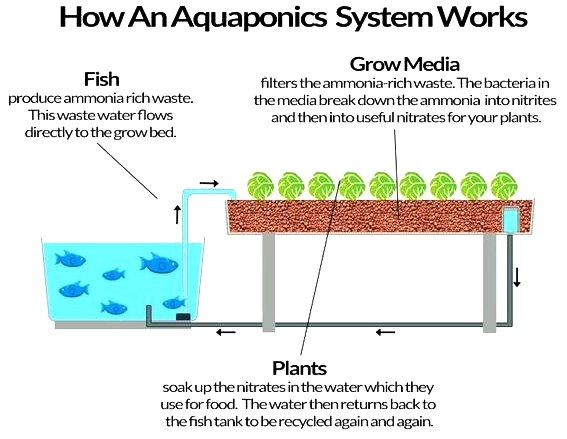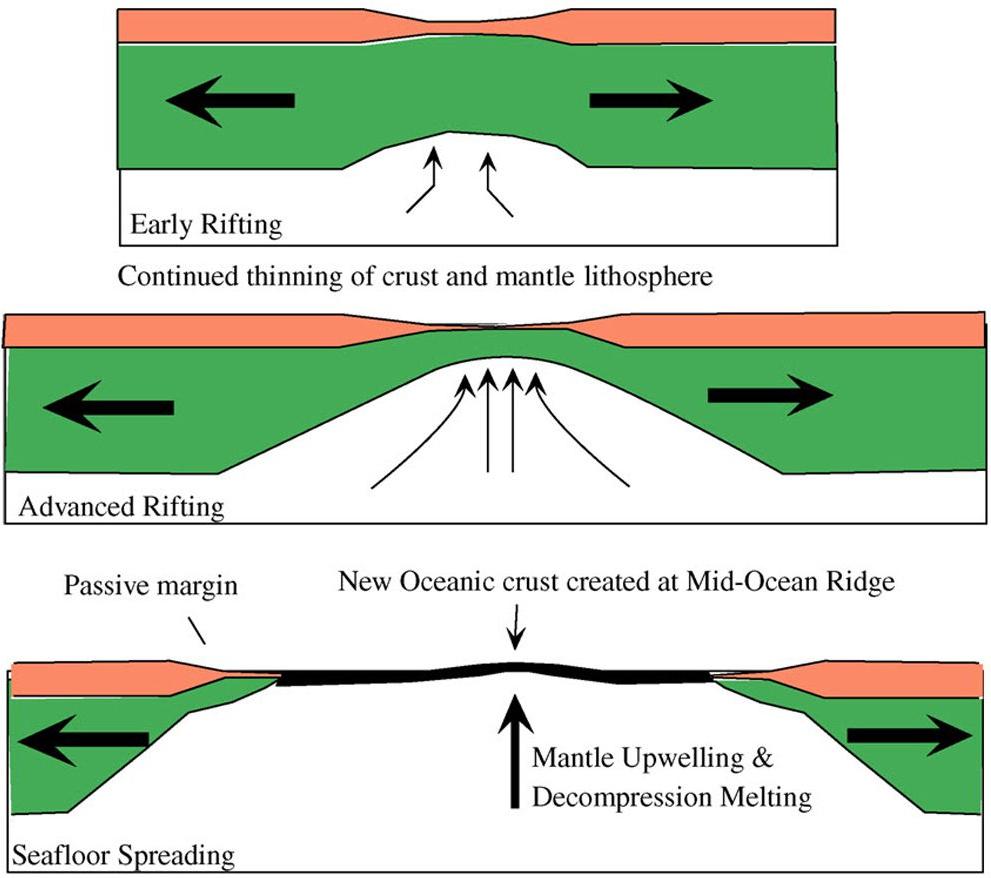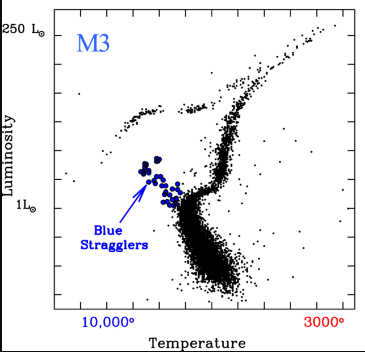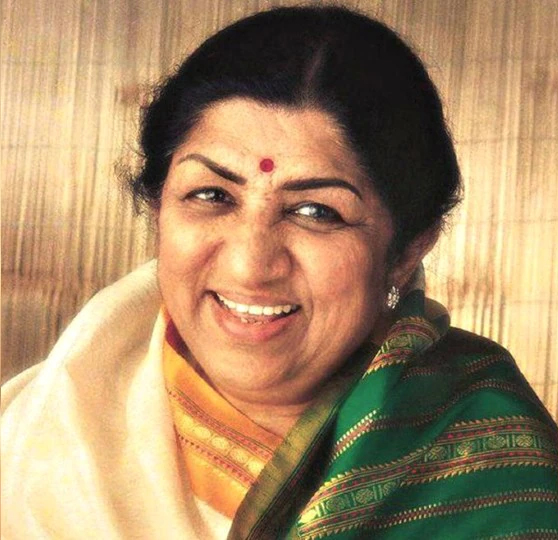National Panchayati Raj Day
For Prelims: National Panchayati Raj Day, SWAMITVA
For Mains: 73rd Constitutional Amendment, Local Self Governance
Why in News?
India commemorates the 12th National Panchayati Raj day on 24th April 2022.
- The Prime Minister has launched the distribution of e-property cards under the SWAMITVA (Survey of Villages and Mapping with Improvised Technology in Village Areas) scheme on the Day.
What is National Panchayati Raj Day?
- Background:
- The first National Panchayati Raj Day was celebrated in 2010. Since then, the National Panchayati Raj Day is celebrated on 24th April every year in India.
- The day marks the enactment of the 73rd amendment of the constitution in 1992.
- Awards Presented on the Day:
- The Ministry of Panchayati Raj has been awarding the best performing Panchayats/States/UTs across the country in recognition of their good work.
- Awards are given under various categories namely,
- Deen Dayal Upadhyay Panchayat Sashaktikaran Puraskar,
- Nanaji Deshmukh Rashtriya Gaurav Gram Sabha Puraskar,
- Child-friendly Gram Panchayat Award,
- Gram Panchayat Development Plan Award and
- e-Panchayat Puraskar (given to States/UTs only).
What is Panchayati Raj?
- After the Constitution came into force, Article 40 made a mention of panchayats and Article 246 empowered the state legislature to legislate with respect to any subject relating to local self-government.
- Panchayati Raj Institution (PRI) was constitutionalized through the 73rd Constitutional Amendment Act, 1992 to build democracy at the grass roots level and was entrusted with the task of rural development in the country.
- PRI is a system of rural local self-government in India.
- Local Self Government is the management of local affairs by such local bodies who have been elected by the local people.
- To strengthen e-Governance in Panchayati Raj Institutions (PRIs) across the country, the Ministry of Panchayati Raj (MoPR) has launched eGramSwaraj, a user-friendly web-based portal.
- It unifies the planning, accounting and monitoring functions of Gram Panchayats. Its combination with the Area Profiler application, Local Government Directory (LGD) and the Public Financial Management System (PFMS) renders easier reporting and tracking of Gram Panchayat’s activities.
What are the Salient Features of the 73rd Constitutional Amendment
- The 73rd Constitutional Amendment added Part IX titled “The Panchayats” to the Constitution.
- Basic unit of democratic system-Gram Sabhas (villages) comprising all the adult members registered as voters.
- Three-tier system of panchayats at village, intermediate block/taluk/mandal and district levels except in States with population is below 20 lakhs (Article 243B).
- Seats at all levels to be filled by direct elections (Article 243C (2)).
- Reservation of Seats:
- Seats reserved for Scheduled Castes (SCs) and Scheduled Tribes (STs) and the chairpersons of the Panchayats at all levels also shall be reserved for SCs and STs in proportion to their population.
- One-third of the total number of seats to be reserved for women.
- One-third offices of chairpersons at all levels reserved for women (Article 243D).
- Duration:
- Uniform five year term and elections to constitute new bodies to be completed before the expiry of the term.
- In the event of dissolution, elections compulsorily within six months (Article 243E).
- Independent Election Commission in each State for superintendence, direction and control of the electoral rolls (Article 243K).
- Power of Panchayats: Panchayats have been authorised to prepare plans for economic development and social justice in respect of subjects illustrated in Eleventh Schedule (Article 243G).
- Source of Revenue (Article 243H): State legislature may authorise the Panchayats with
- Budgetary allocation from State Revenue.
- Share of revenue of certain taxes.
- Collection and retention of the revenue it raises.
- Establish a Finance Commission in each State to determine the principles on the basis of which adequate financial resources would be ensured for panchayats and municipalities (Article 243I).
- Exemptions:
- The Act does not apply to the states of Nagaland, Meghalaya and Mizoram and certain other areas because of socio-cultural and administrative considerations. These areas include:
- the Scheduled areas and the tribal areas (under Schedule VI of the Constitution) in the states.
- the hill areas of Manipur for which district councils exist,
- Darjeeling district of West Bengal for which Darjeeling Gorkha Hill Council exists.
- However, the Parliament has extended the provisions of Part IX to Vth schedule areas through an Act called the Provisions of Panchayats (Extension to the Scheduled Areas) Act, 1996.
- At present, 10 States namely Andhra Pradesh, Chhattisgarh, Gujarat, Himachal Pradesh, Jharkhand, Madhya Pradesh, Maharashtra, Odisha, Rajasthan and Telangana have Fifth Schedule Area.
- The Act does not apply to the states of Nagaland, Meghalaya and Mizoram and certain other areas because of socio-cultural and administrative considerations. These areas include:
UPSC Civil Services Examination, Previous Year Question (PYQs)
Q. Local self-government can be best explained as an exercise in (2017)
(a) Federalism
(b) Democratic decentralisation
(c) Administrative delegation
(d) Direct democracy
Ans: (b)
Q. Consider the following statements: (2016)
- The minimum age prescribed for any person to be a member of Panchayat is 25 years.
- A Panchayat reconstituted after premature dissolution continues only for the remainder period.
Which of the statements given above is/are correct?
(a) 1 only
(b) 2 only
(c) Both 1 and 2
(d) Neither 1 nor 2
Ans: (b)
- According to Article 243F of the Indian Constitution, the minimum age required to become a member of Gram Panchayat is 21 years. Hence, statement 1 is not correct.
- According to Art 243E(4) of the Indian Constitution, a Panchayat constituted upon the dissolution of a Panchayat before the expiration of its duration will continue only for the remainder of the period for which the dissolved Panchayat would have continued. Hence, statement 2 is correct.
- Therefore, option (b) is the correct answer.
Anti-Defection Law
For Prelims: Anti Defection Law, Tenth Schedule, Parliament, Constitutional Amendments
For Mains: Indian Constitution, Constitutional Amendments, Anti Defection Law and related issues, Tenth Schedule, judicial review, Right to Information
Why in News?
Recently, the Vice-President has said that the time has come to amend the anti-defection legislation in the country to plug existing loopholes.
What is Anti Defection Law?
- The anti-defection law punishes individual Members of Parliament (MPs)/MLAs for leaving one party for another.
- Parliament added it to the Constitution as the Tenth Schedule in 1985. Its purpose was to bring stability to governments by discouraging legislators from changing parties.
- The Tenth Schedule - popularly known as the Anti-Defection Act - was included in the Constitution via the 52nd Amendment Act, 1985.
- It sets the provisions for disqualification of elected members on the grounds of defection to another political party.
- It was a response to the toppling of multiple state governments by party-hopping MLAs after the general elections of 1967.
- However, it allows a group of MP/MLAs to join (i.e., merge with) another political party without inviting the penalty for defection. And it does not penalize political parties for encouraging or accepting defecting legislators.
- As per the 1985 Act, a 'defection' by one-third of the elected members of a political party was considered a 'merger'.
- But the 91st Constitutional Amendment Act, 2003, changed this and now at least two-thirds of the members of a party must be in Favour of a "merger" for it to have validity in the eyes of the law.
- The members disqualified under the law can stand for elections from any political party for a seat in the same House.
- The decision on questions as to disqualification on ground of defection are referred to the Chairman or the Speaker of such House, which is subject to ‘Judicial review’.
- However, the law does not provide a timeframe within which the presiding officer has to decide a defection case.
What are the Grounds of Disqualification?
- If an elected member voluntarily gives up his membership of a political party.
- If he votes or abstains from voting in such House contrary to any direction issued by his political party or anyone authorized to do so, without obtaining prior permission.
- As a pre-condition for his disqualification, his abstention from voting should not be condoned by his party or the authorized person within 15 days of such incident.
- If any independently elected member joins any political party.
- If any nominated member joins any political party after the expiry of six months.
What are the issues with Anti Defection Law?
- Undermining Representative & Parliamentary Democracy:
- After enactment of the Anti-defection law, the MP or MLA has to follow the party’s direction blindly and has no freedom to vote in their judgment.
- Due to Anti-Defection law, the chain of accountability has been broken by making legislators accountable primarily to the political party.
- Controversial Role of Speaker:
- There is no clarity in the law about the timeframe for the action of the House Chairperson or Speaker in the anti-defection cases.
- Some cases take six months and some even three years. There are cases that are disposed off after the term is over.
- There is no clarity in the law about the timeframe for the action of the House Chairperson or Speaker in the anti-defection cases.
- No Recognition of Split:
- Due to the 91st amendment, the anti-defection law created an exception for anti-defection rulings.
- However, the amendment does not recognize a ‘split’ in a legislature party and instead recognizes a ‘merger’.
- Subversion of Electoral Mandates:
- Defection is the subversion of electoral mandates by legislators who get elected on the ticket of one party but then find it convenient to shift to another, due to the lure of ministerial berths or financial gains.
- Affects the Normal Functioning of Government:
- The infamous “Aaya Ram, Gaya Ram” slogan was coined against the background of continuous defections by the legislators in the 1960s.
- The defection leads to instability in the government and affects the administration.
- Promote Horse Trading:
- Defection also promotes horse-trading of legislators which clearly go against the mandate of a democratic setup.
- Allows only Wholesale Defection:
- It allows wholesale defection, but retail defection is not allowed. Amendments are required to plug the loopholes.
- He raised concern that if a politician is leaving a party, s/he may do so, but they should not be given a post in the new party.
What are Different Suggestions related to the Anti-defection Law?
- The Election Commission has suggested it should be the deciding authority in defection cases.
- Others have argued that the President and Governors should hear defection petitions.
- The Supreme Court has suggested that Parliament should set up an independent tribunal headed by a retired judge of the higher judiciary to decide defection cases swiftly and impartially.
- Some commentators have said the law has failed and recommended its removal. Former Vice President Hamid Ansari has suggested that it applies only to save governments in no-confidence motions.
Way Forward
- The problem arises from the attempt to find a legal solution to what is essentially a political problem.
- If stability of government is an issue due to people defecting from their parties, the answer is for parties to strengthen their internal systems.
- There is an ardent need for legislation that governs political parties in India. Such a law should bring political parties under Right to Information (RTI), strengthen intra-party democracy, etc.
- In order to shield the detrimental effect of the anti-defection law on representative democracy, the scope of the law can be restricted to only those laws, where the defeat of government can lead to loss of confidence.
UPSC Civil Services Examination, Previous Year Question (PYQs)
Q. Which one of the following Schedules of the Constitution of India contains provisions regarding anti-defection? (2014)
(a) Second Schedule
(b) Fifth Schedule
(c) Eighth Schedule
(d) Tenth Schedule
Ans: (d)
Vertical Farming
For Prelims: Vertical Farming, Hydroponics, Aquaponics, Aeroponics
For Mains: Cropping Patterns, Agricultural Marketing
Why in News?
India is evolving every day with something new. Also, industrialization is increasing dramatically due to which many arable lands are at greater risk. Vertical farming in India is the answer to all these problems.
What is Vertical Farming?
- Background:
- In 1915, Gilbert Ellis Bailey coined the term vertical farming and he went on to write a namesake book.
- The modern concept was first proposed in 1999 by professor Dickson Despommier. His concept centered on the idea that urban areas should grow their own food which can save time and resources required for transportation.
- About:
- Instead of horizontally on the ground like traditional farming, vertical farming grows crops in vertical, stacked layers without putting too much impact on land and water resources which are scarce.
- It includes soilless farming techniques, among others.
- Vertical farming systems like aeroponics and hydroponics come under the broad umbrella ambit of ‘protected cultivation’, where one can control and regulate multiple variables like water, soil, temperature, humidity, and so on.
- Protected cultivation, when practised at scale, offers a massive potential to shorten and optimise our farm-to-plate supply chains by making food available closer to the consumer and thereby can go a long way to improve our nation’s GDP (Gross Domestic Product) and reduce imports dependency.
- Types:
- Hydroponics:
- Aeroponics:
- Aeroponics is an environment-friendly way of farming in which the roots are suspended in the air and plants grow in a humid environment without soil.
- It is a variation of hydroponics where both growing medium and flowing water are absent.
- Aquaponics:
- Aquaponics is a system that combines hydroponics and aquaculture within a closed system.
- There are three biological components in the aquaponics process: fishes, plants, and bacteria.
What is the Significance of Vertical Farming??
- Financial Viability:
- While the upfront initial capital cost involved in vertical farming is usually higher, if and when the entire crop production design is done properly, it makes absolute sense and financial viability to grow, harvest, and produce a particular crop throughout the year or in a specific season applying vertical farming methods.
- More Water Efficient:
- All crops grown via vertical farming methods are usually over 95% water efficient, as compared to crops grown through traditional agricultural practices.
- Water Saving:
- For a country like India, which consists of only around 4% of the world’s water resources, vertical farming-based technologies can not only increase the efficiency and productivity of our food production but can also lead to quantum leap in water savings, which in turn shall support and give impetus to India’s ambitious goals of achieving carbon-neutrality within its food production ecosystem.
- Better Public Health:
- Additionally, as most of the crops are grown “without the use of pesticides”, it leads to “a positive contribution towards better public health as well over time”; hence the consumers can expect zero-pesticide produce, which is also healthy, fresh, and sustainable for the planet.
- Employment:
- Lastly, it is important to emphasise that protected cultivation has the potential to create new jobs, skill sets, and economic opportunities for the agriculture students of our country, who are seen to be able to adapt and move forward with the learning curve quickly.
Way Forward
- Encouraging Soilless Techniques for Food Security: Strengthening food production and distribution systems is key to fighting hunger and tackling the burden of malnutrition.
- The development of aquaponics and hydroponics embrace all dimensions of food security.
- The government shall consider these methods as viable alternatives for traditional farming and provide assistance in making these techniques affordable to a larger number of farmers.
- Providing Knowledge and Skills: While these alternative techniques can be utilized by a variety of stakeholders, from household farmers and small- to large-scale farmers, specific knowledge and skills must be developed for safe, successful and sustainable implementation.
- Facilitating Sustainable Farming: In a country like India, there is a constant pressure on agricultural land and its conversion to other uses.
- With Aeroponics and Hydroponics, the discussions around farming can move away from land constraints to focussing more on sustainable farming techniques.
- Way Ahead for Schools: Such systems are difficult but not impossible to maintain, the prerequisite is to have at least basic understandings of these systems.
- Schools might also encourage students to install Aquaponic systems at schools as their practical task for core STEM subjects like Maths, Biology, Chemistry, and Engineering.
Formation & Promotion of 10,000 FPOs
For Prelims: Farmer Producer Organization, Cluster Based Business Organizations, Central Sector Scheme
For Mains: Government Policies & Interventions, Agricultural Marketing, Agricultural Pricing, Significance of Scheme of Formation and Promotion of FPOs
Why in News?
Recently, the Ministry of Agriculture & Farmers Welfare has organized the National Conference of Cluster Based Business Organization's (CBBOs), under the Central Sector Scheme of Formation and Promotion of 10,000 FPOs (Farmer Producer Organization).
What is the Scheme of Formation & Promotion of 10,000 FPOs?
- Launch:
- In February 2020, at Chitrakoot (Uttar Pradesh) with a budgetary provision of Rs. 6865 crores.
- About:
- More than 2200 FPOs produce clusters have been allocated for the formation of FPOs in 2020-21.
- Implementing Agencies (IAs) are engaging Cluster-Based Business Organizations (CBBOs) to aggregate, register & provide professional handholding support to each FPO for a period of 5 years.
- CBBOs will be the platform for end-to-end knowledge for all issues related to FPO promotion.
- Financial Assistance:
- Up to Rs. 18.00 lakh per FPO for a period of 3 years.
- Provision has also been made for matching equity grants up to Rs. 2,000 per farmer member of FPO with a limit of Rs. 15.00 lakh per FPO.
- Provision of a credit guarantee facility up to Rs. 2 crores of project loan per FPO from the eligible lending institution to ensure institutional credit accessibility to FPOs.
- Significance:
- Increase Farmers' Income:
- It will promote the selling of farmers' produce from the farm gate of farmers thereby enhancing farmers’ income.
- This will shorten the supply chain and accordingly marketing costs will get reduced resulting in better income for farmers.
- Create Employment:
- It will accelerate more investment in marketing and value addition infrastructure near to farm gates creating more employment opportunities for rural youth.
- Making Farming Viable:
- It will make farming more viable by aggregating land.
- Increase Farmers' Income:
- Progress:
- More than 5.87 lakh farmers have been mobilized under the Scheme.
- About 3 lakh farmers have been registered as shareholders of the FPOs.
- Equity contribution by farmer members amounts to INR 36.82 crores.
- The total equity base of the FPOs, including the Equity Grant released, amounts to INR 50 crores.
What are the Other Initiatives for Farmers?
- National Mission for Sustainable Agriculture.
- Pradhan Mantri Krishi Sinchayee Yojana.
- Rashtriya Krishi Vikas Yojana (RKVY).
- Nutrient Based Subsidy (NBS) Programme.
- Rashtriya Gokul Mission.
- Pradhan Mantri Fasal Bima Yojana.
- Paramparagat Krishi Vikas Yojana.
What are FPOs?
- FPOs are voluntary organizations controlled by their farmer-members who actively participate in setting their policies and making decisions.
- They are open to all people able to use their services and willing to accept the responsibilities of membership, without gender, social, racial, political or religious discrimination.
- FPOs operatives provide education and training for their farmer-members, elected representatives, managers, and employees so that they can contribute effectively to the development of their FPOs.
- FPOs in Gujarat, Maharashtra and Madhya Pradesh, Rajasthan and some other states have shown encouraging results and have been able to realize higher returns for their produce.
- For example, tribal women in the Pali district of Rajasthan formed a producer company and they are getting higher prices for custard apples.
- FPOs are generally mobilized by promoting institutions/resource agencies (RAs).
- Small Farmers’ Agribusiness Consortium (SFAC) is providing support for the promotion of FPOs.
- The resource agencies leverage the support available from governments and agencies like National Bank for Agriculture and Rural Development (NABARD) to promote and nurture FPOs.
Way Forward
- The role of CBBOs should be to strengthen FPOs so that farmers seek them out.
- FPO is not merely a company, it is a collective for the benefit of farmers. More and more farmers should be part of FPOs.
- Indian agriculture is dominated by small and marginal farmers with average land holdings size of less than 1.1 ha.
- These small and marginal farmers constituting more than 86 % of the total land holdings are facing tremendous challenges both in production and post-production scenarios.
- Collectivization of farmer producers through formation of FPOs is very important to address such challenges and enhance their incomes.
Seafloor Spreading
For Prelims: Seafloor Spreading, tectonic plates, Ring of Fire, Pangea
For Mains: Seafloor Spreading concept and associated geographic features
Why in News?
According to a study that analyzed data from the last 19 million years, Seafloor spreading rates have slowed down by roughly 35% globally.
What are the Highlights of the Study?
- For this study, researchers selected 18 of the world’s largest spreading ridges (mid-ocean ridges).
- A ridge or a mountain ridge is a geographical feature consisting of a chain of mountains or hills that form a continuous elevated crest for an extended distance.
- By studying magnetic records in the rocks on the oceanic crust, they calculated how much oceanic crust had formed over the last 19 million years.
- Basalt rocks on the oceanic crust contain magnetic properties.
- Their magnetism is influenced by the Earth’s magnetic field when the magma reaches the surface and begins cooling to form the crust.
- But the records are incomplete because the crusts get destroyed at subduction zones.
- Subduction zone is a point where two tectonic plates collide, causing one of them to sink into the Earth’s mantle beneath the other plate.
What is Seafloor Spreading?
- The seafloor spreading hypothesis was proposed by the American geophysicist Harry H. Hess in 1960.
- Seafloor spreading is the process of magma welling up in the rift as the old crust pulls itself in opposite directions. Cold seawater cools the magma, creating a new crust.
- The upward movement and eventual cooling of this magma has created high ridges on the ocean floor over millions of years.
- However, the seafloor is destroyed in subduction zones, where oceanic crust slides under continents and sinks back into the mantle, and is reforged at seafloor spreading ridges.
- The East Pacific Rise is a site of major seafloor spreading in the Ring of Fire.
- It is located on the divergent boundary of the Pacific Plate, the Cocos Plate (west of Central America), the Nazca Plate (west of South America), the North-American Plate and the Antarctic Plate.
What are the Reasons behind the Decline of Seafloor Spreading?
- Growing mountains on the continents might be one of the factors driving the slowdown (as it causes resistance to seafloor spreading).
- About 200 million years ago, when the supercontinent Pangea start breaking, there weren’t any major plate collisions or related mountain chains.
- The continents were fairly flat back then.
- Mature Stage of the Supercontinent Breakup: As Pangea progressively broke apart, new ocean basins formed and eventually, the widely fragmented continents started running into each other.
- This happened, for instance, between India and Eurasia, the Arabian Peninsula and Eurasia as well as Africa and Eurasia.
- This is a natural consequence of a ‘mature’ stage of supercontinent breakup and dispersal.
- This happened, for instance, between India and Eurasia, the Arabian Peninsula and Eurasia as well as Africa and Eurasia.
- Changes in mantle convection could also be playing a role as mantle convection transports heat from the earth’s interior to the surface.
- A mantle is a layer inside a planetary body bounded below by a core and above by a crust.
- Mantle convection describes the movement of the mantle as it transfers heat from the white-hot core to the brittle lithosphere.
- The mantle is heated from below, cooled from above, and its overall temperature decreases over long periods of time.
What can be the Impact of Seafloor Spreading?
- Seafloor spreading influences sea level and carbon cycle.
- Seal Level:
- Increasing the rate of seafloor spreading inflates the ridge. Hot, young lithosphere is forming and moving away from the ridge at a faster rate and moving a greater distance from the ridge before it cools and contracts. So sea level rises.
- Carbon Cycle:
- Faster rates mean more volcanic activity, which injects greenhouse gases into the atmosphere.
- Seal Level:
Household Consumer Expenditure Survey
For Prelims: Household Consumer Expenditure Survey, NSSO, NSO
For Mains: Significance of conducting Household Consumer Expenditure Survey
Why in News?
The All-India Household Consumer Expenditure Survey is set to resume this year (2022) after a prolonged break.
- The results will include separate data sets for rural and urban parts, and splice spending patterns for each State and Union Territory, as well as different socio–economic groups.
Why has the Government Stopped Conducting the Survey?
- The government had discontinued the findings of the last Survey, conducted in 2017–18, citing “data quality” issues.
- In 2019, the government had dismissed reports that the 2017–18 Survey findings were being withheld due to adverse outcomes reflecting a decline in consumer spending.
- It was also noted that there was a significant increase in the divergence in not only the levels in the consumption pattern but also the direction of the change when compared to the other administrative data sources like the actual production of goods and services.
- There were also concerns about the “ability/sensitivity of the survey instrument to capture consumption of social services by households especially on health and education.
What is a Household Consumer Spending Survey?
- Time Interval:
- Traditionally, a quinquennial (recurring every five years) survey conducted by the National Sample Survey Office - NSSO (comes under the National Statistical Office), Ministry of Statistics and Programme Implementation.
- Scope:
- Collects information on the consumption spending patterns of households across the country, both urban and rural.
- Information Generated:
- Reveals the average expenditure on goods (food and non-food) and services.
- Helps generate estimates of household Monthly Per Capita Consumer Expenditure (MPCE) as well as the distribution of households and persons over the MPCE classes.
- Significance in General:
- Helps in calculating the demand dynamics of the economy.
- Helps in understanding the shifting priorities in terms of baskets of goods and services, thus providing pointers to the producers of goods and providers of services.
- To assess living standards and growth trends across multiple strata.
- Significance for Policymakers:
- The CES is an analytical as well as a forecasting tool which helps the Government in planning required interventions and policies.
- To spot and address possible structural anomalies that may cause demand to shift in a particular manner in a specific socio-economic or regional division of the population.
- To rebase the Gross Domestic Product (GDP) and other macro-economic indicators.
Blue Straggler Stars
For Prelims: Blue Straggler Stars, Indian Institute of Astrophysics, Astrosat, Red giant, White dwarf, Hertzsprung-Russell diagram
For Mains: Initiatives of Department of Science and Technology, Evolution of Stars
Why in the News?
Recently, Scientists at Indian Institute of Astrophysics, Bengaluru, have found support for one way to understand peculiarity about Blue Straggler Star.
- The researchers made use of the observations by the UVIT instrument (Ultraviolet Imaging Telescope) of Astrosat, India’s first science observatory in space.
- Earlier in September 2021, in the first-ever comprehensive analysis of blue stragglers, Indian researchers had proposed a hypothesis for the evolution of blue straggler stars.
What are Blue Stragglers and How are they Different?
- Blue Straggler Star are hot, blue, massive stars and seem to have a different trajectory of evolution from the norm.
- There are a few stars that, when they are expected to start expanding in size and cooling down, do just the opposite.
- They grow brighter and hotter as indicated by their blue color.
- Thus, standing out from the cooler red stars in their vicinity in the color-magnitude diagram.
- Since they lag their peers in evolution, they are called stragglers, more specifically, blue stragglers, because of their hot, blue color.
- Allan Sandage (an astronomer with Carnegie Observatories in Pasadena, California) discovered blue stragglers in the globular cluster M3 in 1952-53.
- Most are located at least several thousand light-years away from the sun, and most are around 12 billion years old or more.
- The Milky Way's largest and brightest globular is Omega Centauri.
What are Possible Reasons for this peculiarity?
- Possibility 1: These do not belong to the family of stars in the cluster, and hence not expected to have the group properties.
- Possibility 2: if they belong to the group, the evasive behavior is due to these stars gaining mass from a binary companion.
- In this second scenario, the straggler draws matter from the giant companion star and grows more massive, hot and blue, and the red giant ends up as a normal or smaller white dwarf.
- In the research, the scientists found conclusive evidence of white dwarf companions to blue stragglers.
- Possibility 3: Straggler draws matter from a companion star, but there is a third star that facilitates this process.
How is the Age or Evolution of a Star Studied?
- To study the behavior of the star, a graph of the color of a star against its magnitude is plotted.
- This gives an indication of star’s surface temperature, which is related to the total energy given off by it.
- If all the stars are done in a globular cluster, many stars are seen to find a place within a band known as the main sequence.
- This graph is called the Hertzsprung-Russell diagram.
- This diagram plots the temperature of stars against their luminosity or the color of stars against their absolute magnitude.
- It shows a group of stars in various stages of their evolution.
- For example, our Sun is what is called a main sequence star.
- Given its mass and age, it is expected that once it has converted all its hydrogen into helium, its core will get denser, while outer layers expand.
- So, it will bloat into a red giant.
- After this phase, its fuel is spent, it will shrink, becoming a smaller, cooling star called a white dwarf star at the end of its life.
- Given its mass and age, it is expected that once it has converted all its hydrogen into helium, its core will get denser, while outer layers expand.
What is Indian Institute of Astrophysics?
- The IIA with its headquarters in Bengaluru is an autonomous Research Institute wholly financed by the Department of Science and Technology, Government of India.
- IIA conducts research primarily in the areas of astronomy, astrophysics and related fields.
- It was established in 1971.
PM gets Lata Deenanath Mangeshkar Award
Why in News?
Recently, Prime Minister Narendra Modi received the first Lata Deenanath Mangeshkar Award.
- He got the award for his selfless service to the country and society at the 80th annual Master Deenanath Mangeshkar Awards ceremony held in Mumbai.
What is the Lata Deenanath Mangeshkar Award?
- The Lata Deenanath Mangeshkar Award was instituted in the memory and honor of legendary singer Lata Mangeshkar, who had passed away at the age of 92 in February 2022.
- The award will be given every year to only one individual who has made path-breaking, spectacular and exemplary contributions to the nation, its people, and the society, as per the statement by the Master Deenanath Mangeshkar Smruti Pratishthan Charitable Trust.
Who was Lata Mangeshkar?
- Lata Mangeshkar, also known as the 'Nightingale of India', was one of the most versatile singers of India.
- She lent her voice to over 5,000 songs in over a thousand Hindi and 36 regional films.
- In 1974, she became the first Indian to perform at the Royal Albert Hall (U.K). She is the recipient of three National Film Awards, 15 Bengal Film Journalists' Association Awards, four Filmfare Best Female Playback Awards, two Filmfare Special Awards, Filmfare Lifetime Achievement Award and many more.
- Lata Mangeshkar was bestowed with the Dadasaheb Phalke Award in 1989. In 2001, she was awarded the Bharat Ratna, India's highest civilian honour.
- The government of France conferred on her its highest civilian award (Officer of the Legion of Honour) in 2007.
- Along with these, Lata Mangeshkar held the distinction of being the most recorded artist in the history of Indian music in the Guinness Record in 1974.
- The Indian government honored her with the Daughter of the Nation award on her 90th birthday in September 2019.
What are the Other Awards Won by the PM?
- Bhutan’s Highest Civilian Award (2021): He was conferred by Bhutan’s highest civilian award, 'Order of the Druk Gyalpo' also known as “Ngadag Pel gi Khorlo".
- Global Energy and Environment Leadership Award (2021): Awarded by the Cambridge Energy Research Associates CERA for commitment of leadership towards the future of global energy and the environment.
- Legion of Merit by the US Government (2020): The United States Armed Forces award given for exceptionally meritorious conduct in the performance of outstanding services and achievements.
- First Philip Kotler Presidential award (2019): Offered to the leader of a nation.
- Global Goalkeeper Award: Honour by Bill and Melinda Gates Foundation for Swachh Bharat Abhiyan (2019)
- Order of Zayed Award (2019): The highest civilian honour of the United Arab Emirates.
- Order of St. Andrew award (2019): The highest civilian honour of Russia
- Order of the Distinguished Rule of Nishan Izzuddin (2019) The highest honour of the Maldives awarded to foreign dignitaries.
- King Hamad Order of the Renaissance - First Class (2019): Bahrain's top honour.
- Grand Collar of the State of Palestine Award (2018): The highest honour of Palestine awarded to foreign dignitaries.
- Seoul Peace Prize (2018): Seoul Peace Prize Cultural Foundation's biennial award (South Korea) to those individuals who have made their mark through contributions to the harmony of mankind, reconciliation between nations and world peace.
- Champions of The Earth Award (2018): The United Nation’s highest environmental honour.
- Order of Abdulaziz Al Saud (2016): The highest honour of Saudi Arabia awarded to non-muslim dignitaries.
- State Order of Ghazi Amir Amanullah Khan (2016): The highest civilian honour of Afghanistan.

